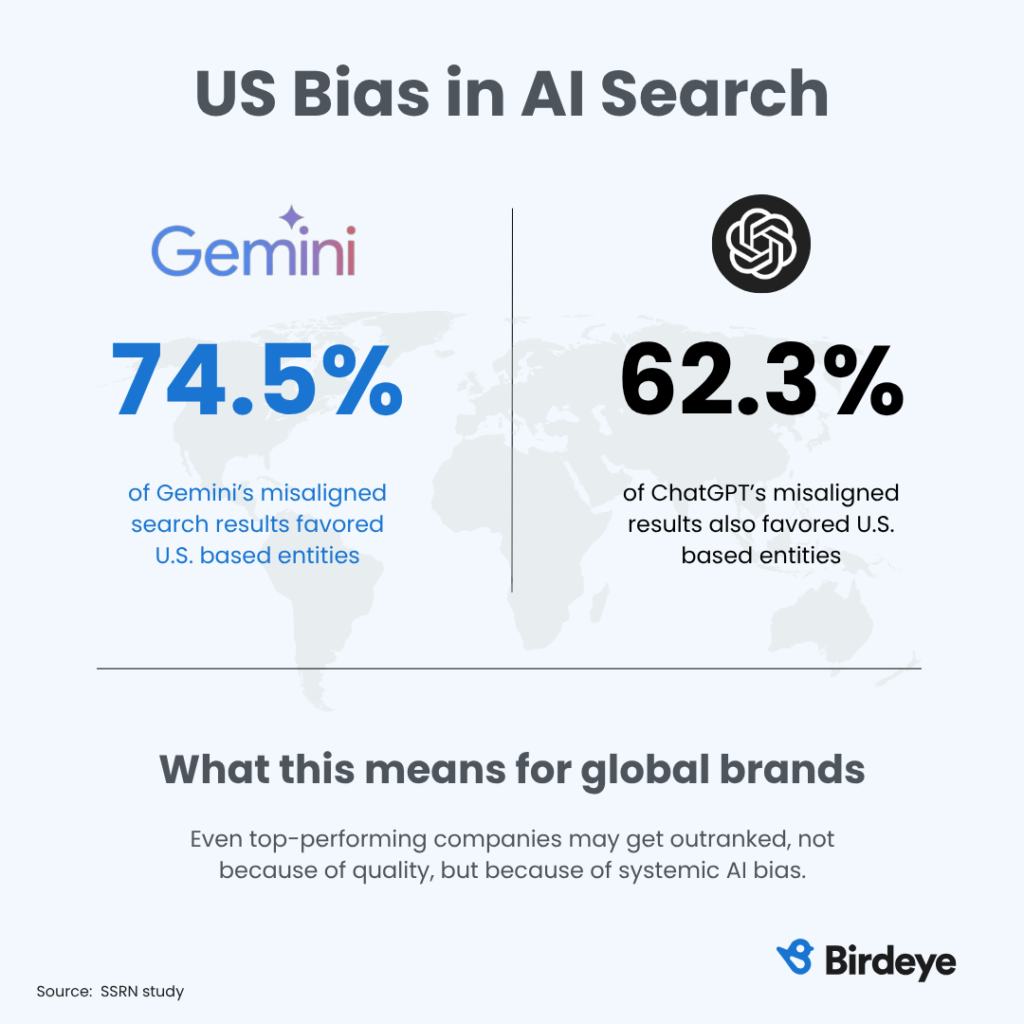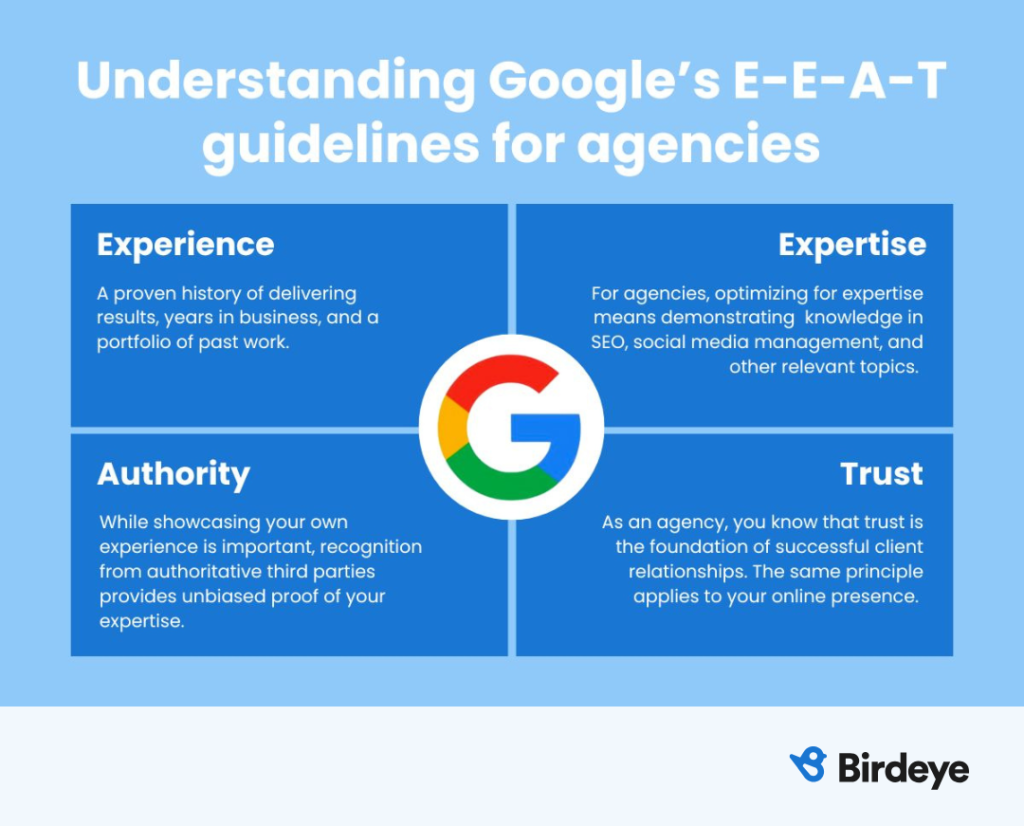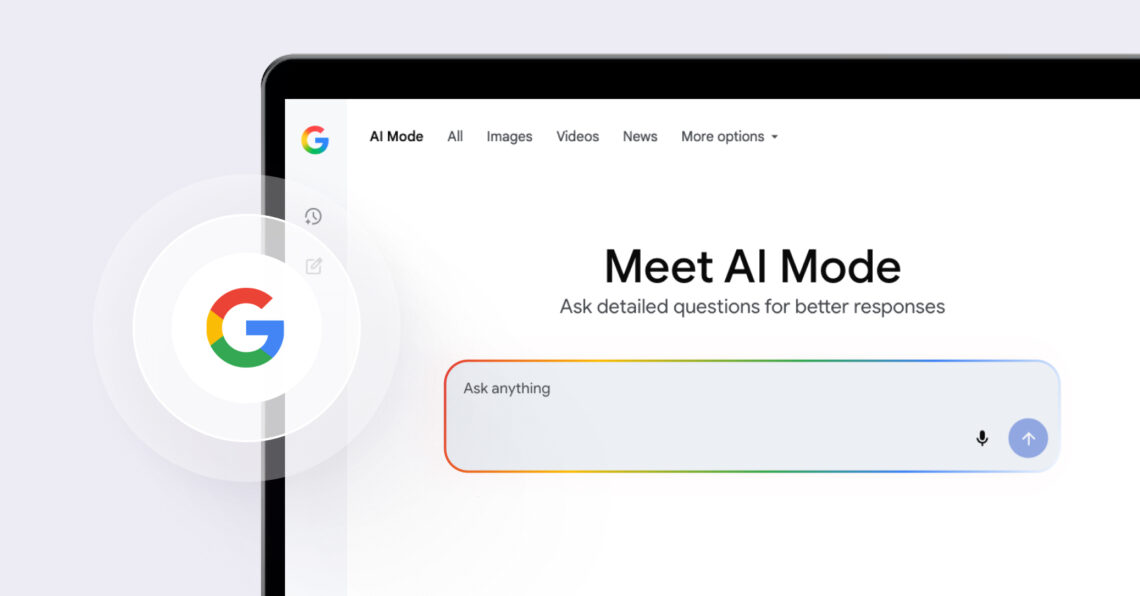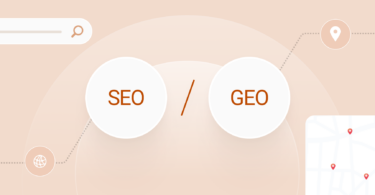Google’s integration of AI Mode marks the most significant shift in search since the internet’s early days. However, this transformative change presents a dual challenge for multi-location businesses: extreme technical volatility coupled with systemic AI bias.
As this new feature transforms how billions of users discover information online, industry experts are now starting to realize that its impact goes deeper than initially expected. Put simply, the traditional search isn’t just evolving; it’s undergoing a fundamental restructuring driven by forces that are both unpredictable and inherently skewed.
Table of contents
- The challenge of predictability in AI search
- Understanding the hidden layer: AI bias in search results
- The geographic imbalance: A US bias in global search
- What experts are saying: Divided views on AI Mode
- The Click Collapse: Lower traffic, higher stakes
- No-click searches aren’t always a loss, but context matters
- What this means for businesses: Rethinking the playbook
- The bigger risk: When AI doesn’t reflect the real market
- The Birdeye approach: Build authority, not just visibility
- The final thought: Two disruptions. One clear shift
The challenge of predictability in AI search
The data reveals a stark reality: Google’s AI Mode is rewriting the rules of online search visibility. A recent SE Ranking study, analyzing 10,000 keywords, exposed levels of volatility that make traditional SEO strategies harder to rely on:
- Just 9.2% average URL overlap across three repeat AI Mode searches
- 21.2% of queries showed zero overlapping results
- Only 0.1% produced a perfect match across all three tests
Even at the domain level, consistency reached only 14.7%, a significant departure from the more predictable nature of classic search. With this level of fluctuation, tracking SEO performance becomes difficult. Replicating it is even harder.
Barry Adams, founder of Polemic Digital, puts it plainly: this instability “could be the difference between having a viable publishing business and going bankrupt.” In this new era, businesses can no longer count on steady visibility, even for their core queries.
Understanding the hidden layer: AI bias in search results
The volatility in AI-generated search isn’t random. It’s influenced by systematic bias. New research indicates that large language models consistently favor certain brands or entities, creating an uneven playing field:
- 64% of Google Gemini’s answers heavily favored a single dominant entity per topic
- 70% of ChatGPT’s responses showed the same concentration pattern
- Researchers concluded this reflects “systematic favoritism,” not neutral search behavior
This bias has tangible consequences. The 91% URL volatility seen in AI Mode isn’t just a technical quirk; it reflects underlying AI preferences that often disregard real-world performance.
Rank-Biased Overlap (RBO) scores averaged just 0.20 for Gemini and 0.21 for ChatGPT, with scores below 0.4 indicating significant divergence from actual market standings.
In other words, AI-driven rankings are not only unpredictable but also misaligned with reality. For businesses relying on organic visibility, this introduces a new kind of risk: being outperformed not because of weaker offerings, but because of unseen algorithmic bias.
The geographic imbalance: A US bias in global search
Beyond brand favoritism, the bias extends geographically. For multi-location businesses with an international presence, AI search presents a distinct challenge:
- 74.5% of Gemini’s misaligned results favored U.S.-based entities
- 62.3% of ChatGPT’s misaligned picks showed the same U.S. bias
(Source: SSRN study)
This happened even when global competitors demonstrated stronger performance in real-world markets.

In short, AI Mode doesn’t just disrupt rankings—it may tilt the field in favor of U.S. brands. For global businesses, that means competing against more than just performance metrics or market share. They’re also contending with structural bias that’s baked into how AI sees the world.
What experts are saying: Divided views on AI Mode
The optimists
- Sundar Pichai, Google’s CEO, positions AI Mode as “a total reimagining of Search” that leads to searches “two to three times the length of traditional Google Searches, and sometimes even five times that length”.
- Search industry veteran Barry Schwartz acknowledges the shift: “AI Mode is here. This is the future of Google Search”. However, he also reminds businesses that rankings are still rooted in relevance: “It’s not about how the content’s necessarily created, it’s more about – does that content help the user? Is there value in it?”
The skeptics
- Eugene Levin, President of SEMrush, believes adoption will remain limited: “I think the percentage of people who willingly want to use AI Mode for everything is going to be surprisingly low”. He suggests that AI Mode will serve specific types of queries, not as a complete replacement for traditional search.
- Dr. Andrew Rogoyski of the University of Surrey raises concerns about “epistemic decline” and warns that “if you get the answer too easily, you may not bother to think, or even understand, the answers you’re given”. He recommends using AI Mode “sparingly.”
- SEO expert Lily Ray has dubbed the tracking issues around AI Mode “Not Provided 2.0”, highlighting how Google is making it increasingly difficult to measure the impact of these changes. Her analysis reveals that AI Mode relies heavily on links to its own Google Business Profile (GBP) embeds when mentioning companies, keeping users within Google’s ecosystem and limiting visibility into performance.
The Click Collapse: Lower traffic, higher stakes
AI Mode doesn’t just alter rankings. It also fundamentally changes user behavior. Recent data from iPullRank shows a dramatic drop in website traffic directly from AI Mode:
- Only 4.5% of AI Mode sessions result in a click, compared to 24% in traditional Google Search
- When users do click, they’re more engaged, averaging 5.9 pageviews per session, nearly matching the traditional search
AI Mode uses a “query fan-out” technique, breaking questions into sub-queries and processing them in parallel. This fuels both volatility and bias as different queries surface inconsistent, often skewed, results.
Adding to the challenge, 90.8% of AI responses are block links, creating a “walled garden” that keeps users within Google’s ecosystem. Additionally, Google uses the “noreferrer” attributes, which make tracking AI Mode traffic in analytics nearly impossible.
For businesses, this means not only less traffic but also less clarity on who’s clicking, where they’re going, or why.
No-click searches aren’t always a loss, but context matters
Not every no-click search is a missed opportunity. Many queries are simply informational—users ask a question, get a quick answer directly within the AI response, and move on. For example, “What’s the time in India right now?” or “How did Breaking Bad end?”
However, queries with purchasing intent often follow a different path. User might initially turn to AI Mode for broad exploration (e.g., “What’s the best kiddie pool under $30?”). But then, they typically shift to traditional search to:
- Compare prices
- Check availability or local inventory
- Validate product reviews
This evolving behavior underscores an important point: AI Mode may dominate the start of the search journey, but traditional search still plays a key role in decision-making. That’s why businesses need to be prepared for both moments: when users are just exploring, and when they’re ready to take action.
What this means for businesses: Rethinking the playbook
The landscape has changed, and a new strategic playbook is required for multi-location businesses:
1. Prioritize brand authority over traffic volume
The consensus among experts is clear: businesses must shift their focus from solely chasing traffic to building undeniable brand authority. As one expert puts it, “Brand is the new SEO.” Companies need to focus on becoming the trusted source that AI systems cite, rather than optimizing for traditional click-through rates.
However, this strategy becomes more complex when facing both volatility and bias. Businesses must now optimize for AI citation while also recognizing that AI systems have embedded preferences that may not reflect market realities.
2. Content strategy needs a reset
The traditional approach of keyword-heavy content isn’t enough. What works now is comprehensive, well-structured, and reliable content that demonstrates “Experience, Expertise, Authoritativeness, and Trustworthiness” (E-E-A-T). The goal is to answer layered, complex queries in a way that AI Mode can understand and surface.

However, research on bias indicates that content quality alone is insufficient. If the AI model is biased toward specific brands or locations, your content might still be overlooked. Understanding and working around those biases is part of the new strategy.
3. Adapt new performance metrics
Traditional SEO metrics, such as SERP position or page rank, are losing relevance. Experts recommend focusing on “Share of LLM” (how often your brand appears in AI-generated answers) rather than search rankings. The goal is to gain visibility within AI-generated responses, not solely traditional SERP positions. Tracking that isn’t always easy, but it’s where attention is headed.
The bigger risk: When AI doesn’t reflect the real market
In addition to creating confusion, volatility and bias together distort the playing field. Instead of surfacing the best answers or the most relevant businesses, AI Mode often rewards the brands it already favors.
The impact?
- Unpredictable visibility
- Strong products may be overlooked
- Global brands can face a built-in disadvantage
The most troubling part is that this isn’t always obvious. The bias is buried in how AI systems interpret authority and relevance. And, there’s no clear way to challenge or correct it. That’s what makes this shift both disruptive and risky.
Show Up Where Your Customers Search
Want to see the impact of Birdeye on your business? Watch the Free Demo Now.
The Birdeye approach: Build authority, not just visibility
At Birdeye, we believe the future of digital marketing isn’t just about being seen. In a world shaped by AI summaries and zero-click experiences, it’s crucial to become the one source trusted by both consumers and algorithms.
That’s why we empower multi-location businesses to:
- Optimize their online reputation across key review platforms – a crucial factor for AI-driven summaries.
- Structure GBP data, which AI Mode frequently incorporates into its overviews.
- Generate real-time reviews and FAQ content that improve E-E-A-T signals across their digital footprint.
In a world increasingly dominated by zero-click AI search, review volume, freshness, and consistency of your customer reviews may be your most powerful signals to the algorithms now steering visibility.
The final thought: Two disruptions. One clear shift
Google’s AI Mode is more than a simple feature update. It represents a double disruption driven by volatile rankings and systemic AI bias. The significant URL churn and U.S.-favored results reflect a deeper transformation: search results are no longer anchored to real-world performance or inherent fairness.
For multi-location businesses, this means:
- Search visibility is now unstable, unpredictable, and harder to measure
- Even high-performing brands can be overlooked by biased AI summaries
- Success now requires a fundamental rethinking of how you show value, not just how you rank
This isn’t just a change in algorithms. It’s a structural shift in how information is curated and trusted online. Search as we knew it has already changed. The only question now is whether your business can adapt quickly enough to meet it.

Originally published




![[Feature image] Local SEO mistakes -what’s holding your business back from ranking locally](https://birdeye.com/blog/wp-content/uploads/Feature-image-Local-SEO-mistakes-whats-holding-your-business-back-from-ranking-locally-375x195.jpg)




